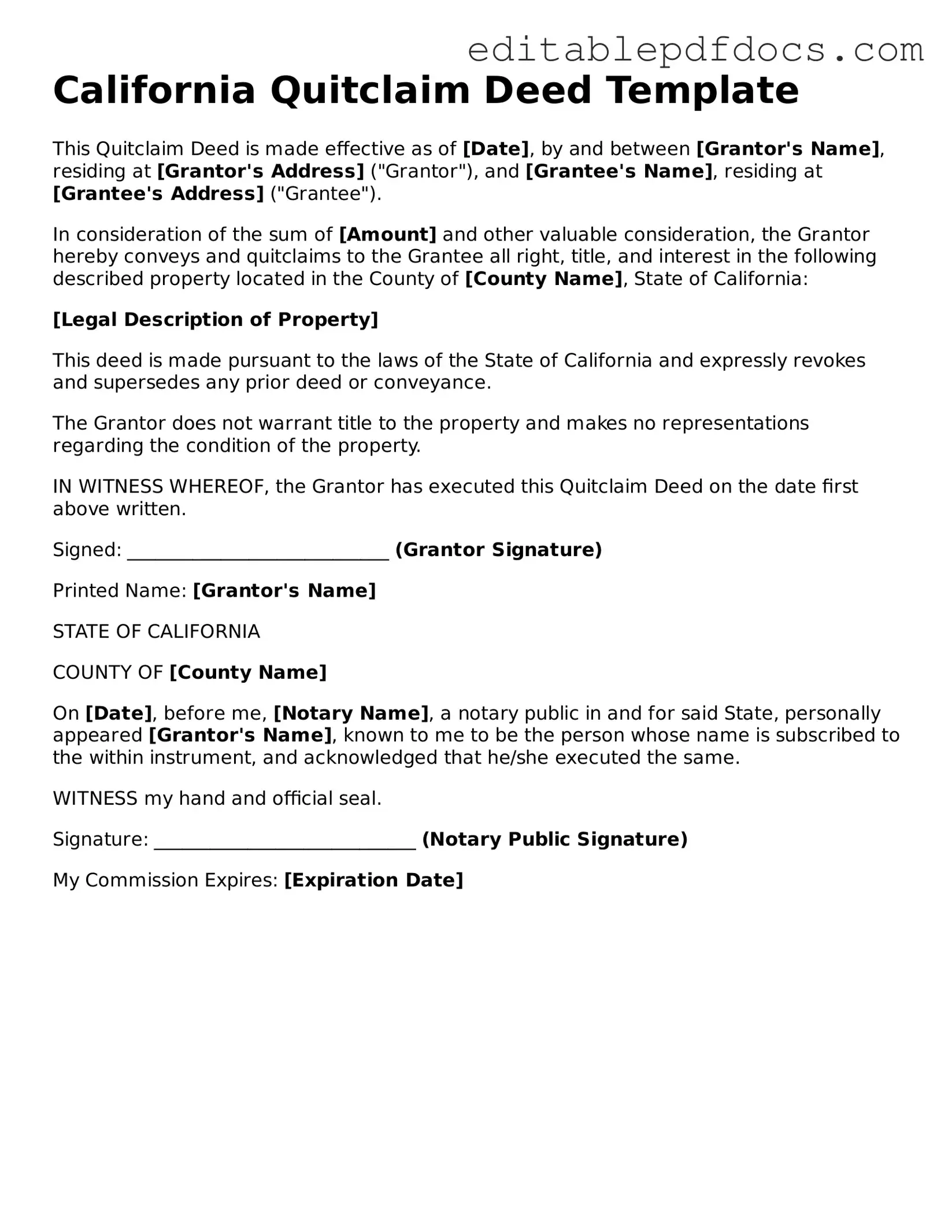Filling out a California Quitclaim Deed form can seem straightforward, but many individuals make common mistakes that can lead to complications down the line. One frequent error is failing to provide accurate property descriptions. The legal description of the property must be precise, including lot numbers, parcel numbers, and any relevant geographical markers. Without this detail, the deed may not be valid.
Another mistake involves neglecting to include the names of all parties involved. The grantor, or person transferring the property, and the grantee, or person receiving it, must be clearly identified. Omitting a name can create confusion and potentially invalidate the transfer. It is essential to use the full legal names of all parties to avoid any issues.
People often overlook the importance of notarization. A Quitclaim Deed must be signed in front of a notary public to be legally binding. Failing to have the deed notarized can result in the document being rejected by the county recorder's office. This step is crucial for ensuring the deed is recognized by law.
Additionally, many individuals forget to include the date of the transfer. This date is important for establishing the timeline of the transaction and can affect the rights of the parties involved. Without a date, the deed may be considered incomplete.
Another common error is not checking for any outstanding liens or encumbrances on the property. If there are existing claims against the property, these issues should be resolved before transferring ownership. Ignoring this step can lead to legal disputes and financial loss.
People also sometimes fail to understand the tax implications of a Quitclaim Deed. While transferring property through a Quitclaim Deed may seem simple, it can have tax consequences. Consulting with a tax professional before completing the deed can help avoid unexpected liabilities.
Finally, many individuals do not take the time to review the entire document before submitting it. Errors in spelling, grammar, or formatting can lead to misunderstandings or legal challenges later. Taking a moment to double-check all details ensures that the deed is accurate and complete.
